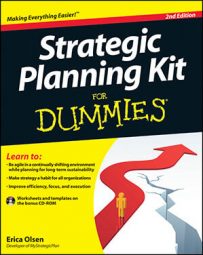Although it’s imperative that key employees have a voice in planning, not everyone has to literally be at the meeting table. The old cliché that too many cooks spoil the broth couldn’t be closer to the truth. Too many people in the room can lead to chaos and confusion, resulting in a strategic plan by committee instead of through educated decisions and leadership.
If you have a lot of people who want to participate in the process, include them in a couple different ways:
Collect employees’ thoughts and opinions via an employee survey, and charge someone in the meeting to be sure this data is brought to the table and considered as part of the process.
Hold a series of meetings. Perhaps the first and last meetings are with your senior management team, and a couple meetings in between are with key employees and staff. In either case, you collect ideas and opinions that are valuable to developing your plan, but you reserve the right to make the final decisions about what actions you take.
How many is too many? Seven people is the optimal size of a decision-making group. Each additional member reduces effectiveness by 10 percent, according to Marcia W. Blenko, Michael C. Mankins, and Paul Rogers, authors of Decide & Deliver: 5 Steps to Breakthrough Performance (Harvard Business Press).
Realistically, groups tend to consist of between 10 and 15 people. If you have more people than that, you can always break up into small teams and only convene the full group at key points in the process.

